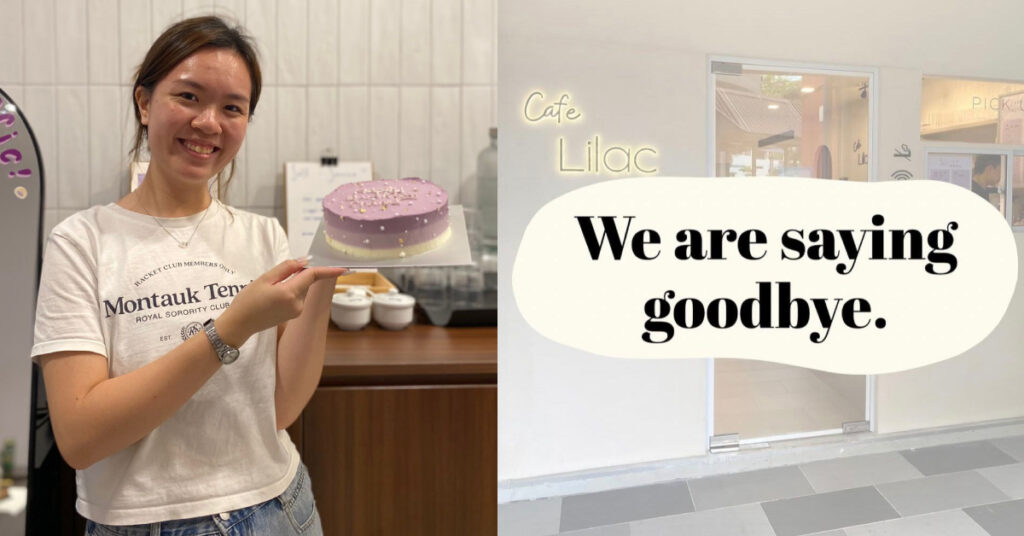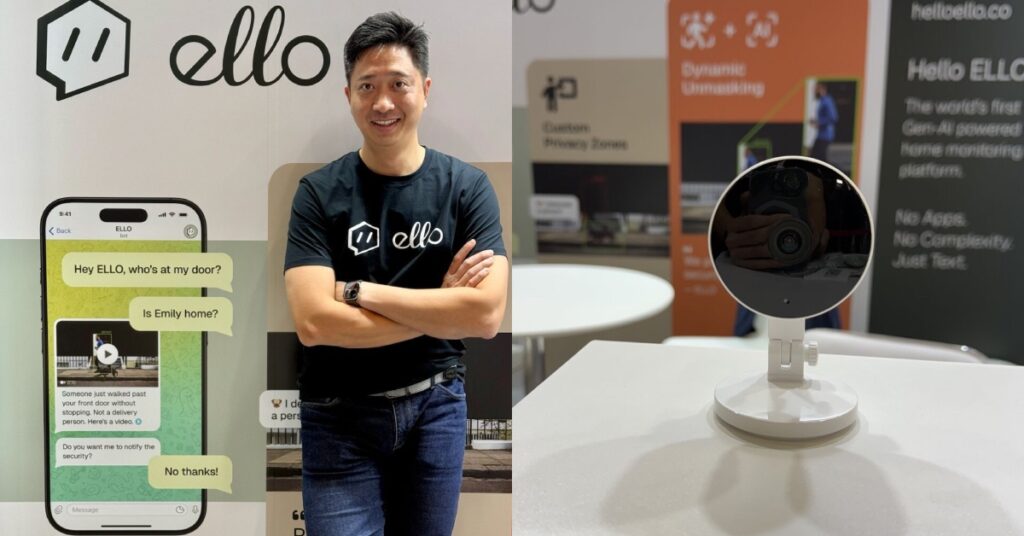According to a report by VC firm Cento Ventures, Singapore accounted for a quarter of some US$5.99 billion in capital invested in the region’s tech firms during the first half of 2019.
This figure is up from 13% for the whole of 2018.
In addition, research by Accenture also revealed that fintech investments in Singapore had “nearly quadrupled” to US$453 million in the same period, effectively “placing [Singapore] as the third largest fintech market by funds in the Asia-Pacific, just behind China and India”.
This year, we’ve also seen a slew of fundraising news from startups and firms in various verticals, from robo-advisors to media platforms.
Fundraising isn’t just about slapping together some stats about your company on a Powerpoint presentation, however.
Beyond that, there’s also the decision on who to approach, how much to raise, and whether to choose debt or equity funding.
We got in touch with a few Singapore-based firms that have raised funds this year and got some insights on how they did it.
99.co

2019 has been an exciting year for real estate platform 99.co.
In August, they raised US$15.2 million in a Series B funding round led by MindWorks Venture and Allianz X, with significant participation from existing investors East Ventures, Sequoia India, and Eduardo Saverin.
Plans of extending the reach of the platform in current core markets, launching in new markets, and creating a new vertical of property-related financial products were mentioned then.
In October, 99.co announced its acquisition of REA Group’s consumer brands, iProperty.com.sg in Singapore and Rumah123.com in Indonesia.
They also gained an additional US$8 million investment from the REA Group through the deal.
Darius Cheung, Co-Founder & CEO
Q: How did you identify investors to pitch to, and how did you reach out to them?
At our stage, there are not many (investors to consider). [But do] have friends and people you can get advice from – investors, other founders.
Q: Debt vs. equity, the amount of capital to raise – what were key considerations you took into account when deciding on these?
At the risk of dramatic oversimplification, here’s what I think:
Equity is for company building – raise it when you think the capital/dilution you take in will be less than the value you create from the capital raised.
For example – we take 25% dilution, but with this we can grow revenue 2x by opening a new product line, etc. THAT OTHERWISE WE WON’T BE ABLE TO.
More importantly – conversely, don’t do it unless you think so.
Debt is for cashflow – raise it when you have a running business that you are certain about but don’t have enough cashflow to grow.
Q: What was the most challenging aspect in the entire process of fundraising for you? How did you overcome it?
Being distracted from main business operations – so have a great team who can hold the fort and drive it forward without you being around!
Q: If you can give just one piece of advice for fundraising, what would it be?
Take control of the process.
Mighty Jaxx

Mighty Jaxx International Pte Ltd is an urban culture company that has shipped millions of products to consumers in over 50 countries so far.
Earlier in July, they clinched S$2.15 million from a Pre-Series A investment round led by Singapore venture builder and startup growth platform Eight Mercatus with a matching co-investment from SGInnovate, a Singapore Government-owned firm that invests in, builds and scales deep tech startups.
The investment will be used to fund global expansion and further the development of its proprietary blockchain-powered platform.
Jackson Aw, Founder & CEO
Q: How did you identify investors to pitch to, and how did you reach out to them?
We first look at the area of their expertise and scope of investment.
From here on, it’s either cold email or looking for a referral to the investor.
Q: Debt vs. equity, the amount of capital to raise – what were key considerations you took into account when deciding on these?
We manage a good balance of debt and equity as we position the company for future growth. With debt, we only commit when the interest is favourable and with manageable risk, that is why we partner with OCBC and Enterprise Singapore [who] work with us to identify potential potholes.
For equity, we reserve that for selective funds who are able to provide strategic value which can help extend our reach and capabilities.
Q: What was the most challenging aspect in the entire process of fundraising for you? How did you overcome it?
I believe it is the initial meeting where you get to understand the investor’s key concerns and what they focus on, so that you can address issues that align with their interest.
There will be criticisms from here on, and as a founder you have to be open and see from their perspective.
Q: If you can give just one piece of advice for fundraising, what would it be?
Rejection is a friend, the more you get rejected, the more you learn about your business and so you can [be honest to yourself] about its viability.
Carro

Carro is a car classifieds platform that raised has over US$100 million from investors since its launch over three years ago.
Its latest round, announced in August this year, saw them raising US$30 million from existing investors Insignia Ventures, B Capital Group, Singtel Innov8, Golden Gate Ventures and Alpha JWC and new investors SoftBank Ventures Asia, EDBI, Dietrich Foundation, NCORE Ventures and Hanhwa Asset Management.
The funding will be used to fuel its expansion in Southeast Asia, starting with the acquisition of Indonesia’s C2C marketplace Jualo.
Aaron Tan, Founder & CEO
Q: How did you identify investors to pitch to, and how did you reach out to them?
Being in venture for about ten years now, I roughly know the cheque/fund sizes of the investors. So for me it’s important to go to investors for the right stage and then filter by categories. [For instance, are they] C2B? B2C? B2B?
Reaching out to them requires you to have at least an inning.
For example, if you have an angel investor (like me) or if you already have a seed investor this is the easiest – when you already have an insider in the space.
Failing which, fall back on schools and events.
NUS has NUS enterprise, SMU has BIG, and there are plenty of tech events where VCs go to.
Q: Debt vs. equity, the amount of capital to raise – what were key considerations you took into account when deciding on these?
For us, it’s a little bit different. We run a multi-finance business, which means that debt is very important to us. Lending out money using our equity is a very expensive thing to do.
For other companies that don’t run a loan book, debt should be considered.
It’s all down to value of equity vs. debt over the long run. If you take on debt early on, it helps you by delaying the need for equity. As a result, if you work out the sums, [this arrangement] may be more beneficial for you.
Less raise means less dilution, and [this might be] better for management when they exit.
The key things to look for will be standard things like percentage warrants (typical in venture debt) coverage, interest rates, repayment schedule, tenure and security – for example, corporate guarantee.
Q: What was the most challenging aspect in the entire process of fundraising for you? How did you overcome it?
It’s always about finding a lead investor.
If you have a lead investor, [finding] the rest is typically easy. The main issue with most companies is that they struggle to find a lead investor.
Every stage is different and I think it gets harder over time to secure a lead generally. There are funds who prefer to lead and some who prefer to follow, so it’s about finding out about that early. Sometimes it’s also about creating competition.
Often times, you find yourself with a lead. But very quickly, this would change the moment you have a first lead. [Suddenly,] you will have plenty of leads.
It’s [always] about finding your first believer – how you do that is an entire art than an exact science.
Q: If you can give just one piece of advice for fundraising, what would it be?
Always do your homework. Always understand who you are fund raising from.
Understand who they have backed, understand why they invested.
Give them a reason to invest in you, and know why you are better than your competitors. You have to know your numbers inside out and always understand who you are up against.
Team Flash

In September, esports organisation Team Flash announced that it secured US$1.5 million in seed funding in a round led by Singapore-based family office Octava.
The funds will be used for international expansion and to secure Team Flash’s market leadership in Vietnam.
Beyond that, there are also plans to continue the recruitment of esports and content creators across the region.
Terence Ting, Founder & CEO
Q: How did you identify investors to pitch to, and how did you reach out to them?
There are a few ways to get ‘warm’ introductions to investors.
Personally, I have tried both cold emailing and calling. While you may get a first meeting with them,trust will be initially low and it will be difficult to gain traction with that particular investor.
One creative way to get introduced to a potential investor can be speaking to a portfolio of the VC you are interested in and connecting with them – especially if both your companies are in the same vertical.
From there, you may get a ‘smoother’ introduction to the VC and they will tend to have more trust as you were referred to by a portfolio of theirs.
Q: Debt vs. equity, the amount of capital to raise – what were key considerations you took into account when deciding on these?
There’s never a right answer to this and it depends on the stage of the business at the time. We took on both options before our recent seed fund raise.
As an entrepreneur, you need to make the best decision for your business at the time to keep things going without giving up as much as possible.
Q: What was the most challenging aspect in the entire process of fundraising for you? How did you overcome it?
There will always be investors who are interested and looking, but getting to the term sheet and due diligence stage took us some time as we were [still] figuring out our story and pitching the right angle.
We had to continually refine our story in the last 12 months before we finally secured our seed round of funding.
Q: If you can give just one piece of advice for fundraising, what would it be?
Never give up especially in the early stages of fundraising for your company.
Talk to as many people as you can to gain perspectives on fundraising opportunities in your relevant space.
Secretlab

Founded in 2014, gaming chair company Secretlab bootstrapped their operations for their first 5 years of operations before announcing their first funding round in August this year.
In an investment deal with Temasek-owned Heliconia Capital Management, the latter is taking a minority stake in Secretlab in a deal worth “somewhere between S$200 and S$300 million”.
Secretlab shared that they will be using the funds in R&D, procurement of supply chain, attracting the “brightest and most promising talents” and unique global partnerships.
Ian Alexander Ang, Co-Founder & CEO
Q: How did you identify investors to pitch to, and how did you reach out to them?
We didn’t actively reach out, we just had exploratory talks with a few of the more reputable names and luckily for us, we found a great fit in Derek (Heliconia’s CEO) and his team.
Q: Debt vs. equity, the amount of capital to raise – what were key considerations you took into account when deciding on these?
Every business is different, so think about what your business needs.
For us, it’s less about the amount of capital raised as we were already profitable. We were more concerned with finding the right investor with expertise that will help propel us to the next level.
Q: What was the most challenging aspect in the entire process of fundraising for you? How did you overcome it?
It wasn’t exactly challenging – maybe it was a bit of a distraction from the actual running of the business, which is far more important.
Q: If you can give just one piece of advice for fundraising, what would it be?
Be clear about why you’re fundraising—fundraising is only mandatory for certain kinds of businesses—and what kind of investor relations you want.
In our instance, we were doing our own thing and have had results.
After talking to Derek and his team over at Heliconia, we felt that they were the right guys to take us to the next level, just like they have with many other great companies. We felt good with their investment style of nurturing and believing in the founders and the brand. They believe in letting the founders run the company, and they step in and provide corporate advice and value-add wherever they can.
Our vision and day-to-day will not change as a result of this investment.
That’s really important to us, and what ultimately convinced us to go with them.
Novelship

Launched in 2017 by Singaporean friends Richard Xia Yang and Chris Xue, Novelship can be described as a “Carousell for streetwear and sneakers”.
In August, they raised a little over US$2 million in seed funding in a round led by Global Founders Capital, which also invested in companies like Facebook, Lazada, Traveloka, and Slack.
Then, Novelship mentioned that they will be using the funds to fuel expansion in high-growth markets across APAC, and has identified markets like Malaysia, Hong Kong, and Indonesia.
Richard Xia, Co-Founder & CEO
Q: How did you identify investors to pitch to, and how did you reach out to them?
We actually got introduced to our new investors by our current investors – and it helped so much to have warm introductions from people who actually put in money in.
So the number one thing that we did when we kick-started our fundraising campaign was to reach out to all of our current investors and ask them for introductions. So, I would say it’s pretty important to keep your current investors updated and close to you at all times – they are your biggest assets.
Q: Debt vs. equity, the amount of capital to raise – what were key considerations you took into account when deciding on these?
We talked to many other more senior co-founders and referred to many online sources.
The magic number is consistently 18 – raising for 18 months of growth and expenses. Based on this, we did up a fairly detailed bottom-up 18-months expense projection based on how much we thought each department will grow and the sum of it all is how much we will target to raise.
Debt versus equity is dependent on the needs of the team at the point of time.
Typically, if the team is early stage and wants to complete the round at minimal legal cost and time, debt financing is a good option.
Q: What was the most challenging aspect in the entire process of fundraising for you? How did you overcome it?
The most challenging aspect of this whole process was that I had to juggle my time between talking and following up with investors and fulfilling my business duty in the company.
In the end, I found that fundraising really is a full-time job once the process begins and I wasn’t doing either of the two well by splitting my focus. I had a discussion with my co-founder Chris on this and we agreed that one of us had to be on this full-time – and that person was me.
Q: If you can give just one piece of advice for fundraising, what would it be?
Gone are the times when you can raise large sums with an idea. Focus on getting your business up and going with good traction first.
If you have good traction numbers, let the numbers speak for themselves and it shouldn’t be too difficult to get a good investor onboard.
Circles.Life

Since its commercial launch back in 2016, digital telco Circles.Life has been a frontrunner in the revolution of the telecommunications industry.
In June this year, Circles.Life announced that it closed a funding round for an undisclosed amount led by EDBI with participation from Silicon Valley-based Founders Fund, following a US$50 million funding led by Sequoia India earlier in February.
The firm will be using the funds to build a tech hub in Singapore, bolster its capital resources, and support its global expansion.
Then, Circles.Life also shared plans to launch in more than five countries in the next 18 months, and plans to invest a total of S$250 million in these markets.
Rohan Talwar, Head of Corporate Development
Q: How did you identify investors to pitch to, and how did you reach out to them?
The Circles.Life leadership team has been a part of global financial institutions in their previous roles and have global connectivity which helped us increase our profile initially with investors.
Over the years we have been able to attract a marquee list of shareholders who in turn have facilitated introductions to relevant investors globally.
Given our profile, we do receive a lot of inbound requests from investors across the globe. We also try and attend tech conferences in the region which also helps us in connecting with potential investors.
Q: Debt vs. equity, the amount of capital to raise – what were key considerations you took into account when deciding on these?
Debt is essentially a non-dilutive way of financing wherein the company borrows money from a lender at a certain interest rate with the principal being repaid over a certain period.
However, when it comes to equity, the company raises money in exchange for ownership in the Company through the issuance of shares. Compared to debt, the equity owners don’t have a guaranteed fixed return and have a subordinated claim on the company’s assets.
While debt is cheaper than equity and doesn’t lead to dilution, the Company is exposed to default risk in case the business doesn’t perform well and there is not enough cashflow to support repayment of the debt obligations.
Hence, companies always look at the underlying free cashflow to decide on how much debt they can comfortably repay over the tenure of the debt facility.
Circles.Life is able to raise debt given the asset light, recurring revenue and a positive unit economics business model. The business model along with Circles-X, our unique cloud based telco operating system, enables Circles.Life to scale rapidly across countries while spending a fraction of what traditional telcos spend on infrastructure and operating expenses.
Given our business profile, we have been approached by both Equity and Debt investors and have raised both over the last couple of years keeping the above considerations in mind.
Q: What was the most challenging aspect in the entire process of fundraising for you? How did you overcome it?
The global macro-environment over the last few months has not conducive for fundraising in general (US-China trade war, Brexit, HK Protests, Wework fiasco etc.). The same has also reflected in the recent IPOs/listings trading below their issue price. Even Industry leaders and large companies like Netflix haven’t been spared the bearish outlook.
Specifically for Circles.Life, given we are creating something unique and disrupting the Telco model unlike its ever been done before we do tend to be compared with typical Telcos and MVNOs and only upon understanding our business model are they able to truly understand our competitive advantage and the sustainability of our business model.
Q: If you can give just one piece of advice for fundraising, what would it be?
One golden mantra is “Raise when you can and not when you need to” which is especially true in today’s challenging macro environment.
There should [also] be transparency and realism in the way one builds the Investment thesis.
Remember, you may be pitching to the same investors next year and thus be conservative in your projections.











